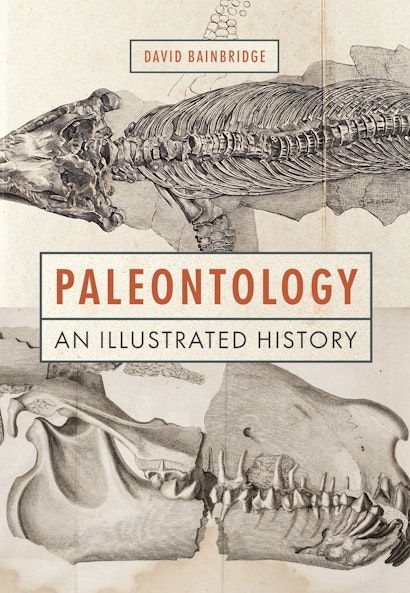Humans have been stumbling upon the remains of ancient animals since prehistoric times, long before fossils were routinely dug up, named, and pieced together into “whole” prehistoric skeletons. The word dinosaur wasn’t established until the mid-19th century – practically yesterday, considering the massive span of the geologic time scale. From bits and bones from unknown creatures emerged tales of giant dogs, dragons, sea serpents, and myriad other creatures. Absurd as these legends might seem, they gave rise to the modern science of paleontology – a discipline that completely reshaped how humans viewed the world.
In his new book, Paleontology: An Illustrated History, comparative anatomist David Bainbridge takes readers from ancient Greece to the eighteenth century, when paleontology started to coalesce into the scientific field we know today. Bainbridge explains how paleontology has always straddled the spheres of science and art, an idea evident in rich visuals that depict great fossil finds, life forms of all shapes and sizes, and prehistoric scenery.
Bainbridge also propels the timeline of paleontology further into the future, considering the roles of DNA and other genetic material and how they might revolutionize our understanding of the origins and evolution of ancient life.
David Bainbridge is a comparative anatomist in the Department of Physiology, Development, and Neuroscience at the University of Cambridge and a fellow of St Catharine’s College. His many books include How Zoologists Organize Things: The Art of Classification; Stripped Bare: The Art of Animal Anatomy; and Middle Age: A Natural History.
